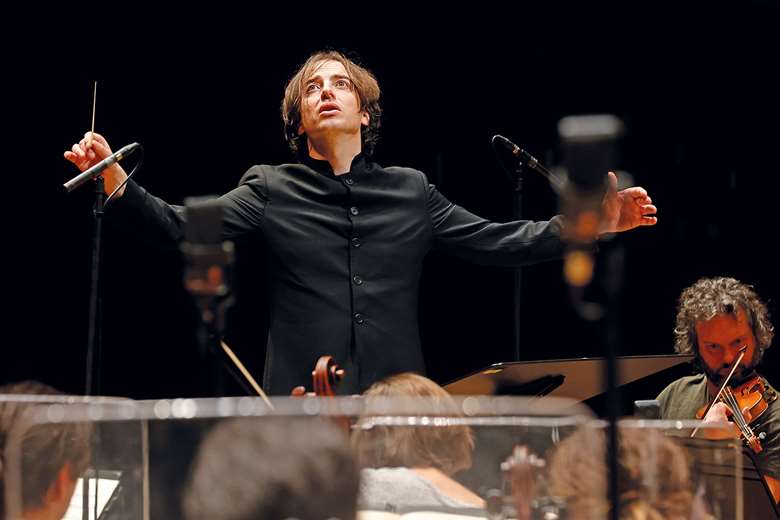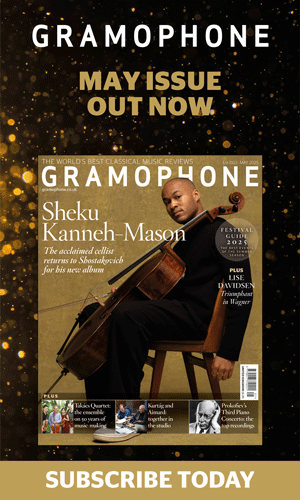The musician and the score: Jérémie Rhorer on Beethoven’s Missa solemnis
David Patrick Stearns
Friday, January 3, 2025
Conductor Jérémie Rhorer talks to David Patrick Stearns about this challenging masterpiece

Jérémie Rhorer’s repertoire is restless: a Haydn opera here, some JC Bach there; the greatest Mozart operas; revisionist Rossini; Poulenc’s Dialogues des Carmélites; high-concept programmes built around a Liszt concerto with seldom-heard contemporaries. But one work he has returned to repeatedly since 2014 (and wouldn’t let go of amid pandemic-related delays) is Beethoven’s Mass in D, Op 123 (Missa solemnis).
His ensemble Le Cercle de l’Harmonie often does mini-tours of a special piece such as this, and back in early 2020 one such tour of the Missa solemnis was due to start in Oslo. But on his way to the airport he learnt that performances had been cancelled indefinitely. Having kept his group intact during lockdown, however, he went on to rekindle interest among producers, and on April 23, 2024, the Missa solemnis was recorded live at Philharmonie de Paris (plus a patch session) for Alpha.
But however welcome it may be, the Missa solemnis (1819-23) intrigues, overwhelms and intimidates both audiences and performers. It has so many simultaneous moving parts that it’s been called the greatest unperformable masterpiece. Riccardo Muti was 80 before taking it on. Jessye Norman opted to sing the mezzo part on the 1991 all-star James Levine recording, stating openly that the soprano lines are too exposed. When Rhorer was called in to replace Daniel Barenboim for a Berlin Staatskapelle performance in 2023, the orchestra was playing it for the first time in decades. Light years beyond the world of Haydn’s Masses as well as Beethoven’s own well-mannered Mass in C (1807), the Missa solemnis is extravagant, obsessive, personal bordering on private and has a Credo that concludes with ‘Amen’ repeated some thirty times. Is Beethoven’s judgement unassailable?
‘Beethoven put all of his tools, all of his knowledge, all of his spirituality into this piece,’ says the 51-year-old Rhorer amid two Zoom calls scheduled around performances of another choral blockbuster, Verdi’s Requiem. ‘It’s said that compositional technique is not about the number of tools but about knowing how and the right moment to use them. I was always intrigued by the nature of the testament of this musical Everest: how it was built, what it was for, its expression of faith.’
Studying the piece is like exploring a cathedral with numerous hidden chapels, alcoves and crypts. Yet Rhorer has a clear compass: ‘I always start from the text. I never listen to any recordings – ever. The most important things to determine are the harmonic reasons for how it goes with the voice.’ He brings to the score breath-related insights that come with having been a boy chorister and a flautist.
Even after extensive study, the Missa solemnis doesn’t emerge as a tidy whole. Rhorer feels that it’s deeply Christian, but also steeped in the Age of Enlightenment; that it’s a somewhat disguised Passion oratorio – one with seldom-detected influences from Handel’s Messiah (which Beethoven studied, even echoing the ‘Hallelujah’ chorus in his Agnus Dei). ‘But the core of the piece’, he says, ‘is the mystery of the Resurrection.’
Yet before mysteries could unfold, foundational matters needed to be settled. Although he guest conducts mainstream orchestras, Rhorer has long specialised in historically informed performance, which is why for the Missa solemnis he pitched his ensemble at A=430Hz – the standard in Beethoven’s Vienna. That’s good news for the chorus, the Audi Jugendchorakademie (its singers aged 16-27). Although this group had brought clean, well-defined choral textures in other repertoire with Rhorer, it now faced music of length and difficulty that can be described as Beethoven’s Ninth multiplied by five. ‘It’s a choir of infinite possibilities,’ enthuses Rhorer. ‘I was shocked by their musical level. There’s an intimacy of understanding between the chorus master and the singers. I knew exactly what they were able to do and knew where I wanted to go in terms of tempi.’
Not being familiar with other Missa solemnis recordings, Rhorer perhaps doesn’t realise that his fugue tempos are faster than anybody else’s (for example, at ‘in gloria Dei patris’, bar 360, track 4, 1'05"). Almost paradoxically, he believes that faster is easier – partly so that the singers can better perceive the overall contour of the music. He feels that that and other detailed techniques create the perception of a smoother line.
Tempos in less-contrapuntal passages were determined from studying soprano vocal lines with their sustained high notes in conjunction with the harmonic rhythm. But for all of Rhorer’s conviction that Messiah was a major influence, Beethoven’s articulation is too far away from the Baroque-period manner. ‘Extreme staccato doesn’t work in most symphonic pieces of his,’ explains Rhorer. ‘The length of the note is part of the orchestration – you have to sustain the whole note and sometimes the whole passage.’ And then some – such as when movements conclude with key instruments on a single and potentially abrupt crotchet. Rhorer’s solution was to subtly arpeggiate the notes, also known as ‘breaking’ the chord.
Philosophical questions about what the music means on a moment-by-moment basis yield more lively discussion, namely on the piece’s ongoing expression of what Rhorer calls ‘the distress of humankind without God’. As a Missa solemnis nerd, I floated my own newly hatched, under-investigated theory that the passages about God tend to be in duple metre, while the human-on-earth passages are often in triple metre – one example being the transition from the ‘Kyrie eleison’ to the ‘Christe eleison’ (bar 86, track 1, 3'14"). That tentatively sits well with Rhorer. Also, his belief that the piece is actually a Passion oratorio finds convincing evidence in the stabbing gestures in the ‘Crucifixus’ of the Credo (bar 157, track 6, 2'02").
For Rohrer, conducting often comes down to the art of transitions. When I ask which transition in the tumultuous Missa solemnis is the most challenging for him, he tells me it’s the Credo’s pianissimo mystery (bar 179, track 6, 4'30") that leads to the exclamatory ‘et resurrexit’ (bar 188, beginning of track 7), if only because so many singers and instrumentalists are tasked with going to soft and loud extremes together on cue.
Among the more important set pieces is the violin solo in the Sanctus, often interpreted as the descent of the Holy Spirit and played on this recording by the much-in-demand Jonathan Stone, former member of the Doric Quartet (go to bar 111, track 9, 1'45"). Rhorer says they barely discussed it: ‘I didn’t want to interfere.’ Stone plays it with little vibrato and the kind of discreet portamento heard in the few surviving recordings of Joseph Joachim (1831-1907), whose lifetime came within four years of overlapping with Beethoven’s. Meanwhile, the images conjured in Rhorer’s mind’s eye during the solo include the Doge’s Palace in Venice, where super-elaborate ceilings look down at bare, polished floors.
The steepest challenge in the piece, arguably, comes in the Agnus Dei when the ‘pacem’ vocal writing that suggests happily tolling bells is invaded by war music that seems to advance from the distance (bar 164, track 11, 1'55"), leaving the soloists asking for mercy but ultimately prevailing with ‘Dona nobis pacem’. Rhorer’s interpretation: ‘It’s easy to forget the problems of conflict, but the problems come back. It’s about Beethoven’s faith in humanity.’ Then comes Beethoven’s single strangest contrapuntal passage – all instrumental, a seemingly random fusion of thematic fragments (bar 266, track 11, 4'24"). It’s music that’s likely to mean something different to listeners on any given day. In fact, some conductors have privately expressed the desire to cut it and much else in the Agnus Dei.
Nobody takes the same road to the Missa solemnis. For me, it began with the 1974 Herbert von Karajan recording – and not because it was good. The original pressings were so crusty that I sensed I was hearing only 70 per cent of the piece, so I located a score, beginning a journey with determination to hear it all. Rhorer’s Missa solemnis journey could be said to have started, however distantly, with Jessye Norman. As a choirboy in the mid-1980s, he sang in a Paris performance of La damnation de Faust in which she was Marguerite. He ran backstage to greet her afterwards: ‘She could see the stars in my eyes. She could probably feel that this was an important moment for me. She picked me up and took me in her arms.’ That’s when he saw his road ahead, which ultimately led to a repertoire that has included Berlioz, Brahms and Verdi, and repeated Missa solemnis encounters – with the inspirational memory of Norman still fresh in his mind.













